Ryan Hall's Blog, page 241
June 22, 2016
Q&A: Ex-MLB Star Eric Byrnes to Take on Western States 100
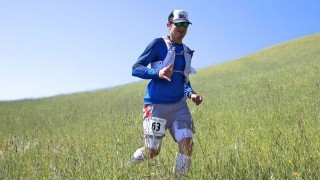
Photo: Glenn Tachiyama
Six years after retiring from a professional sport, Eric Byrnes has reached the pinnacle of an amateur sport—the Western States 100-Mile Endurance Run.
Byrnes, 40, an outfielder who played for five teams in an 11-year major league career that ended in 2010, will be a first-time entrant in the run from Squaw Valley to Auburn, Calif.. The country’s oldest and most prestigious 100-mile event will begin at 5 a.m. Saturday from the base of the Squaw Valley ski resort and advance to the track at Placer High School. Byrnes will be supported by a team that includes former pro cyclist Lance Armstrong, who will pace the final 22 miles of the race with Byrnes.
Although many professional endurance athletes have competed in Western States, Byrnes, who lives in Half Moon Bay, Calif., with his wife and three children, is believed to be the first former professional team sports athlete to participate in the historic trail race that typically has a field of about 365 runners.
Now a broadcaster for MLB Network, Byrnes has completed eight Ironman triathlons in the past five years. , including the Miwok 100K twice. (He placed 25th out of 288 finishers at this year’s Miwok race in 11:01:48.)
We talked to Byrnes about his transition from baseball and what endurance sports means to him:
You come from baseball where you run onto the field from a dugout and you might hear cheering or booing from 40,000 fans. But in trail running, you might not see anyone or hear anything other than the sounds you hear in nature. What are your thoughts transitioning from one kind of sport to another?
One of the things that drew me to ultrarunning was the community aspect. It was the idea that it felt like a team sport. That’s something obviously you don’t get generally in endurance sports. As much as I love triathlon, you don’t get that there, either. To see how real the people are on the trails is unbelievable.
Can you compare endurance sports to baseball in other ways?
Without trying to stereotype ultrarunners too much, it’s like a bunch of hippies out there running with a real sneaky competitive edge. It’s a community and it seems to be a team sport, but there’s also some fiery people out there who love running and love pushing the limits.
How has your body changed from your days in the major leagues to becoming an endurance athlete?
It changes a lot. The biggest changes came when I did my first couple of Ironman races. I came into this thing at 6-foot-2 and solid 210 pounds. I’d been training anaerobically. I’d never run more than four miles. I’d never swam more than 25 yards and I’d never been on a bike other than a BMX bike or a beach cruiser. It was dramatic. I’m now between 180-190 pounds depending upon if you ask me after a long run or a big meal.
People will ask me, ‘Are you in the best shape of your life?’ I just say it’s a much different sort of shape. I was training to be a thoroughbred horse. Everything was just short, quick burst of energy. This is the exact opposite. I was sitting there with 80-90 percent fast-twitch muscle and now I’ve come full circle. I’m now probably 80-90 percent slow-twitch muscle.
What was your first competitive experience like in endurance sports?
I got into it on a dare from three junior high school friends. They were going down to do the Pacific Grove’s sprint triathlon. Basically, they dared me to show up and do it. I showed up with my surfing wetsuit, my beach cruiser and wearing board shorts. I went out there and completely got my ass kicked by 14-year-old girls. That was a big eye-opener.
You lost your father at a young age, just when you started to get into triathlons, and a few years before that, your friend Pat Tillman (the former NFL player) was killed as a soldier in Afghanistan. You carried Tillman’s jersey across finish line at your first Ironman. What was the reason for doing that?
Training and exercise, that was my therapy. That was my way to cope and get through it, the loss of my father and Pat. Without it, I would have had a lot more difficulty. That was kind of the idea of wanting to do Western States this year. My father achieved an advance martial arts level at age 40. With Pat, it’s an opportunity to teach another generation of kids about Pat Tillman. If it didn’t happen this year, no big deal. I would have moved on and tried to get in on whatever process it took for next year. But it’s pretty cool. I can’t tell you how excited I am.
The post Q&A: Ex-MLB Star Eric Byrnes to Take on Western States 100 appeared first on Competitor.com.
Photos: Fast Moms with Olympic Track Aspirations

These fast women are on their way to the U.S. Olympic Trials track championships, and they all have young children in tow. While most of us will never experience the thrill of running at such a high level, pregnancy, childbirth and the busy daily schedule of being a mom and a runner are infinitely more relatable. Combining the two is hard to fathom, but it’s doable, and, as middle-distance runner Alysia Montaño said in a recent interview, “you have to work hard for what’s important to you.”
RELATED: Professional Mother Runners of the U.S. Olympic Trials
The ladies in this gallery, and many more, are showing what it means to be a working mom as a professional runner with Olympic aspirations. The U.S. Olympic Trials will be held July 1-10 in Eugene, Ore., and the top three finishers in each event will earn a spot on the U.S. team competing at the Summer Olympics in Rio de Janeiro in August.
Photo Gallery
1 of {count}
Back to Start
View Larger Image
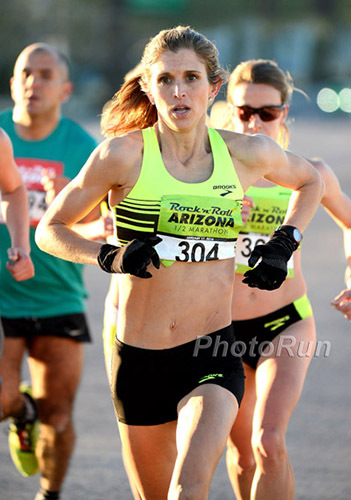
Sara Slattery
34, Phoenix, 10,000m, Brooks
Sara Slattery took a five-year break from competition to recover from overtraining injuries and start a family, which now includes her 3-year-old son Stevie and 1-year-old daughter Cali. In addition to coming back stronger and healthier, Slattery, 34, has a renewed love of running that she credits in part to being inspired by the kids she coaches in her job as distance coach at Grand Canyon University. Coached by her husband, Steve, Sara started the second chapter of her competitive career with running a 32-minute, 13-second 10,000m, an Olympic “A” qualifying standard, at the Payton Jordan Invitational at Stanford in May.
View Larger Image
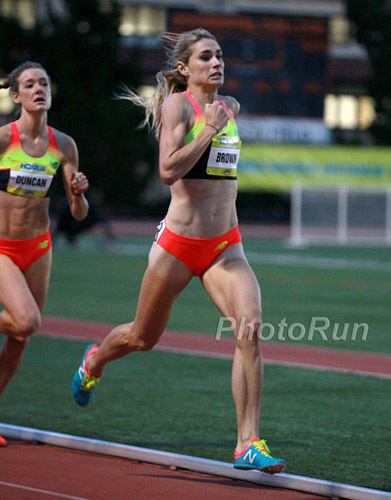
Sarah Brown
30, Warrenton, Va., 1,500m, New Balance
Having a baby four months before the Olympic Trials definitely presents training challenges. But Sarah Brown was able to run and cross train during her pregnancy, and delivered her daughter in March. A nine-time NCAA All-American for the University of Tennessee, Brown set her 4:03.20 PR for the 1,500m in 2015.
View Larger Image
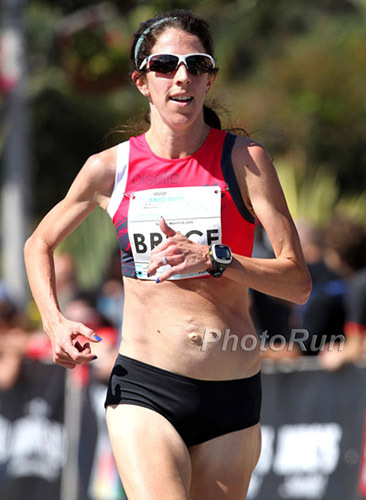
Stephanie Rothstein Bruce
32, Flagstaff, Ariz., 10,000m, Oiselle
Stephanie Rothstein Bruce ran an Olympic standard PR of 32:14.42 at the Stanford Invitational in April. Not bad for her first competitive track event in four years. Not only were Bruce’s two sons (the oldest is 2, the youngest is nine months), in attendance, Bruce had to pump breast milk before the race.
View Larger Image
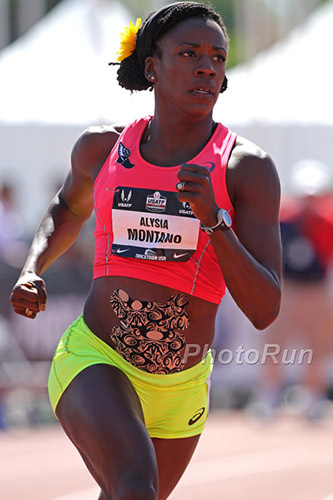
Alysia Montaño
30, Los Angeles, 800m, ASICS
Olympian, six-time U.S. 800m champion and mom to a 2-year old daughter, Alysia Montaño says she is feeling full of “fire and desire” for running at the upcoming Trials. Even while breastfeeding last year, Montaño earned the 2015 U.S. titles for the indoor 600m and outdoor 800m.
View Larger Image

Sara Vaughn
30, Boulder, Colo., 1,500m, Brooks
Growing up, Vaughn thought gymnastics would be the way she pursued her Olympic dreams. Instead she switched to running, and this July will be her second time at the Trials. The mom of two daughters, ages 6 and 9, is also a realtor and says she thrives on having a full schedule.
View Larger Image
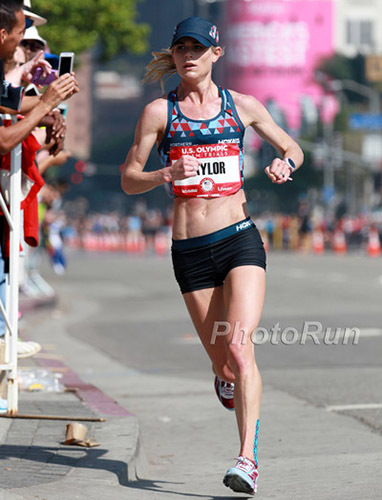
Kellyn Taylor
29, Flagstaff, Ariz., 5,000m, 10,000m, Hoka One One
For her second time at the Olympic Trials—the first being at the U.S. Olympic Trials Marathon in February— the firefighter in training is building on strong showings at the 2105 Pan American Cross Country Cup, she placed second, and the 2015 NACAC Championships in Athletics where she finished first in the 5,000m. Taylor is mom to a 5-year-old daughter.
View Larger Image

Serena Burla
33, Washington D.C., 10,000m, Mizuno
Although Burla has made her name as a marathon—with a 2:28:01 PR—she's run a few fast 10K races on the track too, including a 32:17.34 effort that got her into the U.S. Olympic Trials. “Being a professional runner is a 24-hour, seven-days-a-week job,” Burla says of juggling her running goals with the demands of parenting. “I think many working and runner mothers would agree with me that I always wish I had more time and energy, but the reality is, I do the best I can.” Photo: PhotoRun.net

More Galleries
The post Photos: Fast Moms with Olympic Track Aspirations appeared first on Competitor.com.
Professional Mother Runners of the U.S. Olympic Trials

Kellyn Taylor (left), Sara Slattery (center) and Alysia Montano have juggled motherhood with successful running careers. Photos: PhotoRun.net
From the appropriate amount of weight to gain, to how much running (and how fast) is OK, to when women return to their workouts, there are no easy answers when it comes to pregnancy and running. As challenging as the endless criticizing is for moms who run for fitness, imagine what it’s like for professional runners who also give birth.
When peak physical fitness is a job requirement, some may wonder if it’s possible to have it all. The resounding answer is “Yes!” The key comes in paying attention to your body. Some women are able to run up until giving birth, and return to fitness with seeming ease. Other athletes look at being pregnant as a time to give their body a break from the rigors of training. Sara Slattery, Kellyn Taylor and Alysia Montaño took different approaches to pregnancies, but these three speedster moms are all on their way to the U.S. Olympic Trials which will be held July 1-10 in Eugene, Ore.
PHOTOS: Fast Moms on the Road to Rio
Time to Reboot
Sara Slattery, 34, was a two-time NCAA champion while at the University of Colorado, before winning the Bolder Boulder 10K in 2006 (the last American woman to do so). After placing fourth in the 5,000m at the 2008 U.S. Olympic Trials, Slattery began battling injuries and overtraining issues. She and her husband Steve, a former elite steeplechaser, eventually moved from Colorado back to Slattery’s hometown of Phoenix to start a family. Slattery now has two children, ages 1 and 3 and is a distance coach at Grand Canyon University. As it turns out, pregnancy was just what she needed to look at running in a new light—something she does for the joy of it, not just the job.
“I looked at my pregnancies as a mental and physical break from years of intense training,” says Slattery who ran through month four of each pregnancy, and walked or rode the ElliptiGO to stay active as her pregnancies progressed. “I also had two C-sections, so I had to wait an additional six weeks after each of my children were born before running.”
The break gave Slattery an opportunity to realize how much she loved running. Not only did she enjoy both of her pregnancies, she’s also enjoyed the process of coming back and seeing huge improvements each week. Running is Slattery’s “me time.” Instead of putting so much pressure on individual workouts, she now looks at her training as more of an accumulation.
“I take advantage of the time I have to run. I no longer have the time to overthink things,” says Slattery who credits her coaching job as helping her to rediscover her passion for the sport. “I’m still very competitive, but after a run, I put on my mom hat or coach hat. It’s not the only thing in my life anymore and it takes the stress off a bit.”
According to husband Steve Slattery, who is also Sara’s coach, the biggest shift for her since having children is that she now trains because she wants to and is having fun. It’s almost as if she’s returned to having a high school mentality about her running.
“I give her the workouts, she gets them done and she moves on to the next thing,” Slattery says. “She’s a high achiever and such a talented athlete, but she isn’t worried about it. She wants to win as much as the next person, but she’s turned off so much of the pressure she used to put on herself.”
Day by Day
Kellyn Taylor finished third in the mile at the 2009 NCAA indoor championships when she was running for Wichita State. In 2012, she ran the 10,000m and 5,000m at the 2012 U.S. Olympic Trials, finishing tenth and fourteenth respectively. During the intervening years between being a college athlete and an elite runner, Taylor had a daughter.
“I was fresh out of college and wasn’t training for anything so I just took it day by day,” says Taylor, a personal trainer at the time, of her pregnancy.
Her casual attitude towards running meant she did it just for her, and she ended up running four to six, easy to moderate miles on most days of her pregnancy. “I had a very easy pregnancy and birth but I still took my time getting back into shape.’
The new mom had the added challenge of her husband being deployed to Afghanistan for the first six months after their daughter was born. Managing motherhood, running and now training to become a firefighter has forced Taylor to become more organized.
“I like to get my stuff done and go,” says Taylor, who often logs her second workout of the day at night on the treadmill. “After workouts my teammates like to go to brunch, coffee, or just hang out a bit longer but I like to get home so that I have more time with my daughter.”
Taylor also noticed she’s become a faster runner since having her daughter, something she thinks, in part, stemmed from the extra strength training of hauling a 10-pound baby around all day.
“Once I started training again I saw significant improvements,” says Taylor whose daughter is now 6. “I race to prove to myself and my daughter that anything is possible with hard work.”
But the Olympic contender, who ran a personal best of 31:40 in the 10,000m in May, says it’s impossible to balance it all. And while she tries to make family her first priority, sometimes she misses “a game, field trip or quality time” due to training schedules and races.
“I’m just trying to keep my head above water and be the best mother and runner I can be.”
Running (and Racing) Through
When pregnant with her daughter, Olympian and six-time U.S. 800m champion Alysia Montaño, 30, had the obvious goals of having a healthy pregnancy and healthy baby. She also believed that staying active was key to making both of those goals realities and decided to run as long as she could without pushing it.
She listened to her body and took the different phases in stride, managing four runs a week during the first trimester, daily runs during the second, and about two runs a week for the final stretch. One of those runs just happened to be at the 2014 U.S. Championships, which she ran while 34 weeks pregnant. She finished last, but wanted to show what it meant for a professional runner to be a working mom. Montaño even went on a 5-mile run the same day she had her baby.
“I breastfed my daughter for the first year of her life,” Montaño says. “My running wasn’t snappy, but it was quick enough and I was careful about loading and speed because my ligaments and joints were still loose.”
Even while breastfeeding, Montaño had impressive finishes, including silver in the 800m and gold in the 4x400m relay at the 2015 Pan American Games, and earning the 2015 U.S. titles for indoor 600m and outdoor 800m. She says returning to full strength has been a metaphorical rebirth of her “fire and desire” for hard work.
“For me sports, life and family all tie in together, with one teaching you something about the next,” says Montaño, who wants to show her daughter the importance of working towards goals. “Being competitive is personality-based for me, but you have to recognize the purpose and enjoy your life.”
The takeaway from these three is that they are moms and they are professional runners. And, when it comes to the upcoming Trials, they have a job to do.
RELATED: 5 Tips for Running While Pregnant
The post Professional Mother Runners of the U.S. Olympic Trials appeared first on Competitor.com.
June 21, 2016
Shoe of the Week: Topo Hydroventure
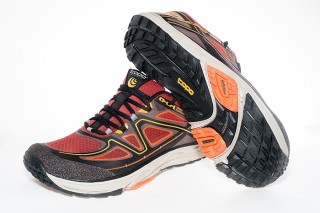
The Topo Hydroventure is the lightest waterproof trail running shoe on the market. Photo: Ed Grant
This relatively new brand continues to offer innovative and unique running shoes built off of modern minimalist design constructs like a low-to-the-ground feel and a roomy toe box. The Hydroventure is a softly cushioned trail runner that offers protection from both rocky terrain and wet conditions. It has a single-layer eVent laminate upper, making it the lightest fully waterproof trail runner on the market. (As with any waterproof shoe, this one gets warm (and leads to sweaty feet) in hot, sunny weather. Unlike most waterproof trail running shoes that have stiff uppers, this one is extremely supple and flexible.) It also has a flexible rock plate, a reinforced toe bumper and thin but durable overlays along the sidewalls for optimal trail protection. Our wear-testers liked this shoe’s versatility and suggested it was optimal for trail running, hiking, peak bagging and light backpacking. We’ve loved it on longer run/hike adventures in Colorado’s high country—including a test session of 14,065-foot Mt. Bierstadt and trails in the Indian Peaks Wilderness Area—where the snowmelt runoff often trickles down trails.
This is the shoe for you if … you’re looking for a do-everything shoe for summer trail or mountain activities.
Price: $130
Weights: 9.7 oz. (men’s), 8.0 oz. (women’s)
Heel-Toe Offset: 3mm; 23mm (heel), 20mm (forefoot)
Info: TopoAthletic.com
RELATED: Shoe of the Week—New Balance Vazee Summit
The post Shoe of the Week: Topo Hydroventure appeared first on Competitor.com.
Workout of the Week: 200-200-400

The only way to lose your speed is by forgetting ago stay in touch with it in the first place. Photo: www.shutterstock.com
Don’t lose touch with your speed when training for longer distances.
One of the biggest fears troubling many runners who are thinking about training for a longer race such as a half marathon, marathon or even an ultra is that they’ll lose their speed amid a steady diet of long runs, bulky workouts and high weekly mileage.
A simple, surefire way to quell those concerns, however, is by not losing touch with shorter speed workouts such as 200 and 400-meter intervals run faster than your 5K race pace. While not a key session for long-distance racers, an occasional set of short, speedy repetitions is an essential ingredient of a well-rounded training program.
RELATED: Don’t Let Marathon Training Steal Your Speed
“We are primarily a long distance group so we don’t do a ton of workouts like this, but they’re important,” says coach Ben Rosario of the Flagstaff-based Northern Arizona Elite team. “Touching some speedier work now and again keeps us from getting stale and keeps our form snappy.”
At least once during a training segment, Rosario has his marathoners do three to four sets of 200 meters, 200 meters, 400 meters at 1-mile race pace with an equal amount of jogging recovery after each repetition. If you’ve never raced a mile or are unsure of what you could run one in right now, the McMillan calculator is a handy tool that uses a recent race result to calculate equivalent race times at other distances.
“[The 200-200-400 workout] works well to plug it in somewhere between a lot of long, hard workouts as a change of pace…literally!” says Rosario.
This workout is best done on a track, but it can easily be performed on a measured stretch of road, a treadmill or just about anywhere with some assistance from a GPS watch. Regardless of where you do it, the key is to keep your wheels spinning so they don’t go flat on you. The only way to lose your speed is by forgetting to stay in touch with it in the first place.
RELATED: Speed Workouts During Marathon Training?
The post Workout of the Week: 200-200-400 appeared first on Competitor.com.
Why Negative Splits are Ideal on Race Day

In almost every racing scenario, negative splits are the ideal pacing strategy.
But first, let’s define our terms: a negative split is when the second half of a race is faster than the first half. For example, if you race a 10K with 5K splits of 25:30 and 24:30 for a 50:00 10K finish time, you’ve just ran a negative split.
It may seem more difficult to run negative splits on race day, but in fact it can be easier. It takes 1-2 miles to properly warm up during a race. Then, your joints are fully lubricated, adrenaline and other performance-boosting hormones are peaking, and muscles are primed to work at their most efficient capacity.
In short, you’re not ready to run at your best until the middle of the race—making a negative split easier to attain than most think.
When the opposite happens (running the first half faster than the second), the runner is not allowing the body to be properly warmed up nor is she taking advantage of the hormones that make racing fast a bit easier. I’m sure you’ve had experience of starting a race fast only to flounder and pull up short in the later miles.
Are there examples of this strategy benefiting runners at the highest levels? How can we put these lessons into practice on race day? Let’s find out.
Negative Splits and World Records
At the elite level, most world records above 800m have been set with negative splits. If you look at the recent history of marathon world records, you’ll see this strategy used effectively to consistently lower the world record performance.
When Dennis Kimetto set the marathon world record to 2:02:57 in 2014 at the Berlin Marthon, he ran the first half in 61:45 and the second half in 61:12.
Haile Gebrselassie ran a similar strategy in 2007 when he ran the WR of 2:04:26 with a spread of 62:29 and 61:57. The next year, when he broke 2:04, he had half marathon splits of 62:05 and 61:54.
This strategy extends beyond the marathon, however. When Kenenisa Bekele ran the 10,000m world record of 26:17:53, his 5K splits were 13:09:19 and 13:08:34.
Galen Rupp had a fantastic negative split performance when he set the American record in the indoor 5K of 13:01.26. His mile splits were 4:14, 4:12, and 4:04 with a final 200m split of 30.36.
Top coaches like Jay Johnson (coach to three national champions) also believe negative splits are ideal for both elite and recreational runners.
The post Why Negative Splits are Ideal on Race Day appeared first on Competitor.com.
Runner Attacked By Black Bear During Trail Marathon

Valles Caldera National Preserve (Photo: Shutterstock)
During the Valles Caldera Runs Marathon this past weekend in New Mexico, a 53-year-old runner was attacked by a black bear at about mile 23, according to numerous reports.
Karen Williams suffered several injuries, including a broken orbital bone, ripped tear duct, puncture wounds and more. She is expected to recover.
The Santa Fe New Mexican spoke to Williams, who harbored no resentment.
“I was just being an ultrarunner, and she was just being a bear,” Williams told the New Mexican. “It was unfortunate that we met.”
The black bear was a mother and her cubs were nearby. She attacked Williams when the runner crested a hill, unaware of what she was about to run into.
According to the New Mexican, it was 30 minutes before another runner found her. One runner stayed with Williams, while another rushed to an aid station to get help. She was eventually flown by helicopter to the University of New Mexico Hospital.
The marathon takes place within Valles Caldera National Preserve in Jemez Springs, N.M. The preserve superintendent Jorge Silva-Banuelos released a statement on social media on Monday.
“A participant in a permitted running event on Valles Caldera National Preserve was attacked by a female American black bear when the individual came upon the bear’s cubs along a backcountry road being used as the event route. The incident occurred in the southwest corner of the preserve, known as Banco Bonito, approximately seven miles away from the Valle Grande.
“Our deepest thoughts and sympathies are with the individual during their recovery from injuries.”
MORE: Santa Fe New Mexican
RELATED: The Do’s and Dont’s of Wildlife Encounters on the Trail
The post Runner Attacked By Black Bear During Trail Marathon appeared first on Competitor.com.
6 Strategies For Safe Summer Running

Keep your cool and beat the heat this summer with these suggestions.
Don’t forget, it can be hazardous to your health to hit the streets when the mercury starts heading north of 90 degrees on the thermometer.
Don’t let the scorching summer sun deter you from trying to maintain your mileage, however. Overbearing heat and humidity are far from ideal training conditions, but they’re not impossible obstacles to overcome if you take the proper precautions. Employ these six strategies to ensure that you run safely under the sun for the remainder of the summer.
Related: The Running Doc’s Warm-Weather Racing Tips
The post 6 Strategies For Safe Summer Running appeared first on Competitor.com.
Your PR Could Earn You $250 at Tracksmith

Courtesy of Tracksmith
This summer Tracksmith is motivating you to run your fastest time. The small startup running brand based out of Wellesley, Mass., founded in 2014 announced the launch of the Personal Record Bonus, a program that rewards everyday runners $250 in store credit for achieving a personal record between June 21 and Aug. 31 wearing Tracksmith gear.
This isn’t the first rewards program implemented by a brand to generate revenue for the company, but it may be the first to make you literally run for it—which could make it all that more rewarding.
“Professional runners are often rewarded for breaking records,” said Tracksmith founder and CEO, Matt Taylor in a press release. “And internally, we’ve long had a cash bonus for any employee who runs a PR. So with the PR Bonus we wanted to extend this tradition to the wider running community, challenging and rewarding those who are willing to chase personal excellence. Pursuing a PR takes dedication, grit and a lot of hard work. We think that is an effort and achievement worth incentivizing.”
In order to be eligible for the reward, the PR must be achieved in an organized race of 800 meters or farther with a race photo (in Tracksmith gear) and published results that must be submitted as evidence on the Tracksmith website.
The post Your PR Could Earn You $250 at Tracksmith appeared first on Competitor.com.
June 20, 2016
Ryan Hall is Retired, But He’s Not Done Running
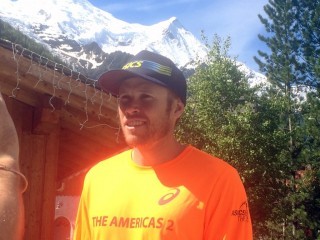
Retired two-time Olympic marathoner Ryan Hall says is interested in pursuing some unique adventure running events.
Much has been made about Ryan Hall’s post-retirement muscle-building routine, but the two-time Olympic runner is not done running.
After battling chronic fatigue for the final four years of his professional running career, Hall, 33, retired last year and started to rebuild his body through consistent weight training and an increase in daily protein intake. Now he’s started to add some casual running to his weekly regimen, both training with his professional runner wife, Sara, who will be competing in the 10,000-meter run on July 2 at the U.S. Olympic Trials, but also training for some new running-related endeavors of his own.
But, just to end any rumors or speculation, he’s not going to train to run a fast marathon again.
Lately, he’s gone back to his roots, running long trail runs in the mountains in preparation for the June 21 ASICS Beat the Sun event, a 140K six-person relay race around Mont Blanc in France, Switzerland and Italy. While there will be a fierce competition among the eight teams in the race, the primary goal for every team is make sure they reach the finish line in less than 21 hours, 35 minutes—the time between the sunrise and sunset in Chamonix, France, as a way of celebrating the summer solstice.
Hall says he’s been running modest mileage as of late, but he admits he’s not close to the fitness level that helped him run several fast half marathons and marathons in his prime, including his 2:04:58 PR at the 2011 Boston Marathon.
“I took several months off from running and didn’t run at all, but now I’m lacing up my shoes and going out and doing runs that I want to do,” Hall said Monday in Chamonix, where the Beat the Sun event begins and ends. “Trail running and being in the mountains is fun, and I’m to a point where I’m pushing myself out there because I want to push myself. It’s been a long time since I felt like that. It’s definitely rekindled my passion for running.”
Having grown up in Big Bear Lake, Calif., and trained on trails from time to time in Mammoth Lakes, Calif., Hall knows the unique challenges that running on mountain trails can present. He’ll run two of the hardest sections of the Beat the Sun event. His first leg will be a 13K section that crosses a massive snowfield between Trient and Champex, Switerzland, and has 4,500 feet of vertical climbing and descending. Later in the day, he’ll run a 19K mountain section that will send him over two 8,000-foot peaks and down a massive trail descent.
“I’ll run hard, because that’s what I like to do, but it will be fun,” Hall said. “I’ll be looking around and checking out the scenery of this amazing place.”
While Hall admits he doesn’t have the fitness he once had, he now tips the scales at 165 pounds—about 28 pounds heavier than his former racing weight. That’s because he’s doubled the amount of protein in his diet while also greatly reducing his carb intake. He loves the added strength he’s gained, especially in his hamstrings and glutes, and wonders if his career might have lasted longer had he not avoided weight training so much.
Hall says if he had to do it all over again, he’d focus on one fall marathon per year and spend the spring racing on the track and building strength and explosive power in his legs.
Still, he’s fine with what he accomplished and happy to be retired.
“It’s definitely easier mentally now because I’m not going through all of the disappointments I was going through,” Hall said. “I feel more stable now, whereas when I was trying to make a go of it I would start to get fit and get to about 80 percent and I would just crash into a long, gradual stretch of feeling terrible and not being able to finish runs. It’s nice to not have that going on any more. I feel good on my runs now. Now if I’m running a 7-minute pace or a 7:30 pace or an 8-minute pace, it doesn’t matter. It’s nice not to have to worry about it being perfect.”
RELATED: Ryan Hall on Retirement, His Career and Training
Hall says he’s been a little bit intrigued by ultrarunning, but he doesn’t necessarily envision himself getting into a situation where he’ll be racing ultras. However, he says he’s intrigued by adventure runs like the Grand Canyon and he’s always been curious about the 90K Comrades Marathon in South Africa. He’s also rumored to be involved in a charity-based multi-location marathon challenge that will be announced soon.
“It would have to be something very compelling like Comrades,” Hall said. “For me, it’s all about unique challenges. An event that has unique aspects to it, like this one, where I’ll be wearing crampons and a helmet and using trekking poles on my first leg over the snowfield. It’s a different kind of challenge, and it’s exciting.”
Hall is the captain of Team Americas 2 and is teamed up with three-time Olympian Deena Kastor and Brazillian runner Iaza Feitoza, along with age-groupers Mariana Brugger (Brazil), Kelsey Landrum (U.S.) and Sarah Brown (U.S.). Team Americas 1 is led by U.S. trail running star Megan Kimmel, Canadian trail running/snowshoeing champion David Le Porho and Argentina elite runner Manuel Mendez, along with amateurs Benjamin Farrell (U.S.), Bill Steinburg (Canada) and Maria Florencia Pollola (Argentina).
“I feel a lot healthier now. My energy is good again,” Hall says. “When I was struggling with fatigue, I wouldn’t have energy for anything else during the day. I would run, eat and sleep and that was it. Now being a father of four, it’s nice to have energy to do other things. You have to be pretty selfish and self-absorbed when you’re a professional athlete, so it’s nice to be able to step back from that and enjoy life a little bit more.”
PHOTOS: Ryan Hall’s Career Highlights
The post Ryan Hall is Retired, But He’s Not Done Running appeared first on Competitor.com.
Ryan Hall's Blog
- Ryan Hall's profile
- 21 followers




